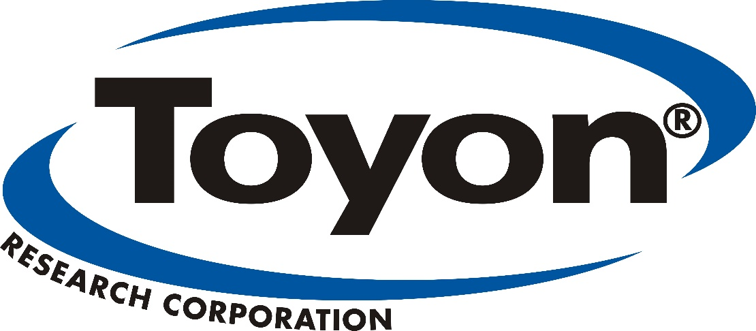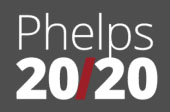















The U.S. Army would like to invite interested business entities and academic institutions to participate in the xTech Rapid Capabilities and Critical Technologies Office (RCCTO) Army Strategic Rapid Acquisition (AStRA) competition (RCCTO Innovation Day 3) being conducted between April and July 2021. xTechRCCTO AStRA aims to engage with eligible large and small U.S.-based companies and organizations and will provide a forum to collaborate with the Army, earn prize money, and provide potential funding opportunities to tackle Army technology gaps for both Program Executive Officer (PEO) for Intelligence Electronic Warfare & Sensors (PEO IEW&S) and PEO Soldier RCCTO.
The U.S. Army’s RCCTO has partnered with Assistant Secretary of the Army (Acquisition, Logistics, and Technology) (ASA(ALT)) to deliver this competition to quickly target, acquire, demonstrate, test, and ultimately field promising new technology. xTechRCCTO AStRA will provide an opportunity for both traditional and nontraditional large and small business entities to submit their innovative technology solutions and prototypes that meet Army’s needs. xTechRCCTO AStRA will also provide Army experts with an opportunity to evaluate these disruptive, innovative approaches and technologies to address critical capabilities required by the U.S. Army.
RCCTO’s mission is to rapidly and efficiently research, develop, prototype, test, evaluate, procure, transition, and/or field critical enabling technologies and capabilities that address near-term and mid-term threats. RCCTO executes this mission consistent with the Army’s modernization priorities that maximize Soldiers’ capabilities to deploy, fight, and win on future battlefields. The U.S. Army faces an ever more lethal and disruptive battlefield requiring quick acquisition of innovative capabilities to prototype and deliver to the warfighter. xTechRCCTO AStRA is an opportunity for eligible businesses to pitch their novel technology solutions and prototypes directly to the U.S. Army.
Purpose
The purpose of xTechRCCTO AStRA is to deliver an innovative approach and prototype to compete for an award to accelerate military technology and fill critical technology and operational gaps for the U.S. Army. This acquisition initiative will enable eligible organizations to respond with proposals that clearly articulate their prototype ideas and demonstrations and how they will satisfy the U.S. Army’s technology and operational gaps as identified in the Problem Statements below. A further goal is to incentivize industry participation by paying business innovators, at least partially, for some of their proposal preparation efforts and costs. RCCTO is focused on finding mature solutions that could provide combat prototype capability that can be in the hands of Warfighters within a one-to-three-year timeframe. The expected period of performance (POP) for prototypes and demonstrations that address the Problem Statements is approximately 18 to 24 months. RCCTO has a total budget of up to $25M of Budget Activity (BA) 6.5 funding (i.e., targeting System Development and Demonstration) for this acquisition; therefore, proposed solutions must deliver an expected outcome of Technology Readiness Level (TRL) 7+ in order to advise capabilities to Warfighters and be able to transition to a Program of Record. Based on the $25M funding limitation, RCCTO expects to award a series of 1 to 8 contracts or Other Transaction Authority (OTA) agreements, but may award more, less, or none based on funding and mission requirements.
This competition aims to drive business participation and promote entrepreneurship by awarding prize money for eligible companies or organizations to pitch their novel technology solutions and prototypes. This acquisition follows and complies with all applicable laws and federal/DOD acquisition regulations. Any awards under the AStRA program are considered “competitive” in accordance with (IAW) both 10 USC 127 and Federal Acquisition Regulation (FAR) 6.102 (d) ii. To encourage commercial solutions, the acquisition process and awards will also follow the guidance of Class Deviation 2018-O0016 under the auspices of Public Law (PL) 114-329, Section 879 of the 2017 NDAA. Prize monies are authorized and will be “merit-based” and paid IAW 10 USC 2374a (Prizes for Advanced Technology Achievements) and 10 U.S.C. § 2371b (Prototype Projects).
Problem Statements
xTechRCCTO AStRA aims to accelerate integration of technology prototypes for crucial Army capability gaps and specific problems into military platforms and will target mature programs/projects with exit TRL of 7+. Submissions will be open to technology solutions that can clearly articulate how the proposal/prototype addresses and solves one of the problem statements outlined below:
PEO IEW&S Problem Statements
Topic 1: Multifunction Antenna for Medium Altitude Air Platform
Problem Statement: As the Army modernizes to meet Large Scale Combat Operations (LSCO) and Multi-Domain Operations (MDO), it needs its aerial sensors to do more with less. Multifunction antennas are not a new concept, but with recent technological advances, the Army believes there may be commercial solutions available to expand current capabilities. The Army is looking for a millimeter-wave multifunction RF system to find, fix, and track moving targets using low-cost commercial-off-the-shelf or mature technology on a Size, Weight, and Power (SWaP) constrained platform. The frequency goal is 18-50 GHz while maximizing the number of concurrent operating modes. Primary modes include Air/Ground Moving Target Indication (AMTI/GMTI) radar, Synthetic Aperture Radar (SAR) imaging, Electronic Support/Attack (ES/EA), and ship-to-ship communications. Secondary modes include terrain following and reach-back communications. The design needs to consider both ground and airborne targets.
Topic 2: Enhanced Sensor to Shooter Support with Manpackable Edge Device Enabled by Federated Learning
Problem Statement: The Army is interested in leveraging commercial satellite sensors (Electro-optical, RF, Thermal, etc.) in order to reduce the sensor to shooter timeframe and enhance the warfighters’ ability to identify and assess objects of interest. This capability will be utilized in tactical, forward deployed environments as a component of large-scale combat operations in the Tactical Intelligence Targeting Access Node (TITAN) system. As such, it must be light weight, easily maneuverable, and quickly concealable (e.g., in a Manpack form factor). This solution will utilize the most efficient and effective methods for assessing, compiling, and presenting data as actionable information. This will be accomplished by employing both traditional computing and display techniques augmented by artificial intelligence, machine learning, and/or machine vision paired with enhanced visualizations such as 3D, Augmented Reality (AR), or Virtual Reality (VR) as appropriate. As part of this effort, the Army is also interested in Federated Learning (FL). Currently, the Army utilizes centralized machine learning (ML) approaches to train models which require significant upfront investments in data annotation and model training that are often time consuming and expensive. These centralized approaches involve data pipelines that use central servers that host trained models to make predictions. The downside of these approaches is that all the data collected by edge devices/sensors is sent back to the central server for retraining, and subsequently returned back to edge devices. This round-trip limits a model’s ability to learn in real-time, increases latency, cost and engineering complexity when applied in Delayed/Disconnected, Intermittently-Connected, Low-Bandwidth (DIL) environments. In contrast, FL, is an approach that updates models at the edge device itself using local data. These locally trained models are then sent from edge devices back to the central server where they are aggregated before a consolidated and improved ‘global’ model is sent back to the edge devices. Using FL, all data is kept in local storage on edge devices and only model weights are exchanged between edge devices and the central server – enabling models to learn in real-time. This decentralized ML approach significantly reduces latency, network/bandwidth requirements and retraining costs. Additionally, since data is kept on local devices this approach simplifies and reduces data security/privacy risks common across edge systems.
Topic 3: Machine Learning/Artificial Intelligence/Automation for Dynamic Cyber Electromagnetic Activities (CEMA) Mission Planning and Execution at the Tactical Edge.
Problem Statement: The Army, leveraging Modular Open System Approaches (MOSA) technologies such as Cyber/EW Modular Open Suite of Standards (CMOSS), will be bringing new levels of flexibility to the Battlefield in support of Multi-Domain Operations (MDO). Platforms such as the Tactical Cyber Equipment CMOSS Chassis, Terrestrial Layer System (TLS), and Multi-function Electronic Warfare (MFEW) will be able to deploy disparate and concurrent CEMA capabilities that previously required a greater number of individually sustained systems delivering singular capabilities. As the number of hosted capabilities grows, the ability to dynamically plan and reprogram missions and capabilities based on situational awareness on tactical edge node devices will become readily apparent. The Army is interested in software and algorithms, hardware/software systems, and machine learning/artificial intelligence/automation solutions capable of processing tactical node sensor data in real time to dynamically plan or reprogram disparate CEMA capabilities provide to achieve the desired effects on the Battlefield. The Army is particularly looking for novel solutions capable of executing in resource constrained environments (low SWaP dismounted systems) to provide these capabilities. The Army will also explore proof of concepts and prototype solutions with the goal of incorporating these technologies into the above or future Programs of Record.
PEO Soldier Problem Statements
Topic 4: Energy Storage, Power Management, Distribution, and Generation Capabilities – Novel Battery Chemistries and Technologies
Problem Statement: The single most common piece of feedback any piece of electronic piece of equipment gets is to run for longer. This is especially true for nano Unmanned Aerial Systems (<150g) that are inherently limited in duration due to the physics of flight. The Army is looking for new battery chemistries and technologies that significantly increase the energy density in these small form factors. Batteries should allow for easy swapping into currently fielded systems (but specialized chargers are acceptable). Sufficient cycle life (>150 charge discharge cycles) is a minimum requirement.
Topic 5: Data and Processing – Edge Processor Aided Target Recognition Solutions
Problem Statement: Robotics and Autonomous Systems are changing the character of warfare at an astonishing pace. Small Units are increasingly left behind as advances in computing, sensors and algorithms become burdensome for the dismounted Soldier. The Army is looking for aided target recognition solutions that can operate on edge processors that can identify targets of potential interest including personnel, vehicles, common weapons, and ground hazards. Solutions that can process both electro-optical and infrared imagery (VGA class) and ideally exploit both simultaneously to operate over more operational conditions are most appealing.
Topic 6: Low Size, Weight and Power Cross Domain Solution Device
Problem Statement: Within the digital framework, Fire Supporters End User Device (EUD) operates on the “Fires Net” which is classified Secret. The Maneuver, which the Fire Supporter is supporting and co-located with, also has an EUD but theirs are Secure But Unclassified (SBU). Due to the different classification levels a Cross-Domain Solution (CDS) is required. Currently, due to SWaP limitations, there are limited CDSs echelons above the forward located Maneuver and Fire Support assets. Digital information must travel from an Infantry Soldier, up the Maneuver digital chain until it reaches a CDS, then back down the Fires digital chain until it gets to the Forward Observer. This process results in stale information and requires additional time to clear and process digital fires.
Partner Agency: The U.S. Army’s Rapid Capabilities and Critical Technologies Office (RCCTO)


Apr 28, 2021 - May 25, 2021

N/A

Invitation to Phase 2: Technology Pitches


Jun 29, 2021 - Jun 30, 2021

N/A

$5,000/Each


Jul 1, 2021 - Aug 24, 2021

N/A

Proposal Invitation with RCCTO


Aug 25, 2021 - Aug 25, 2021

N/A

Total Contract Pool: $25M
Only U.S.-based companies or organizations are considered eligible to participate in this effort. Submissions from entities or organizations that do not have a primary place of business in the U.S. will not be considered for the prize competition.
Each eligible entity:
